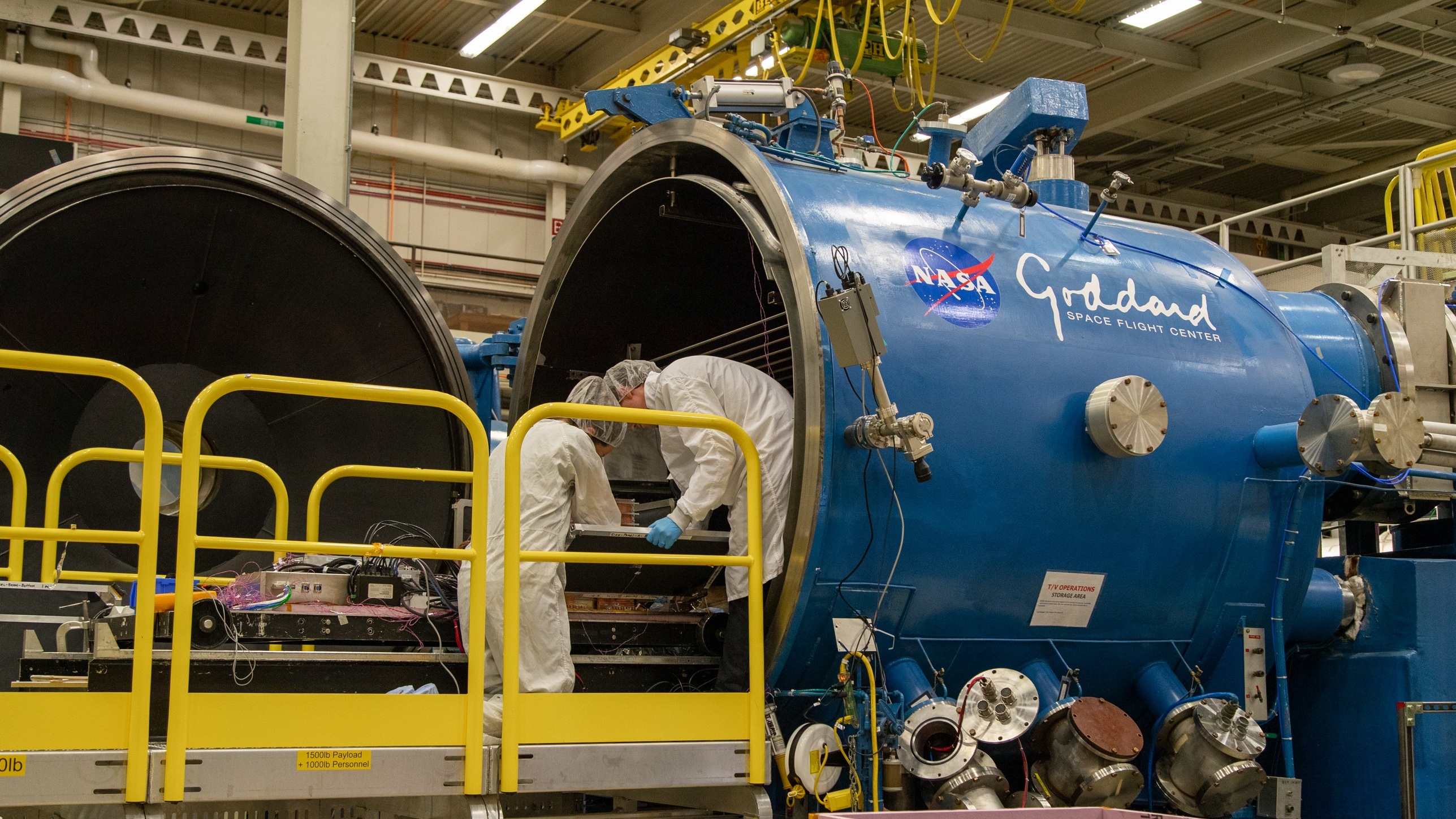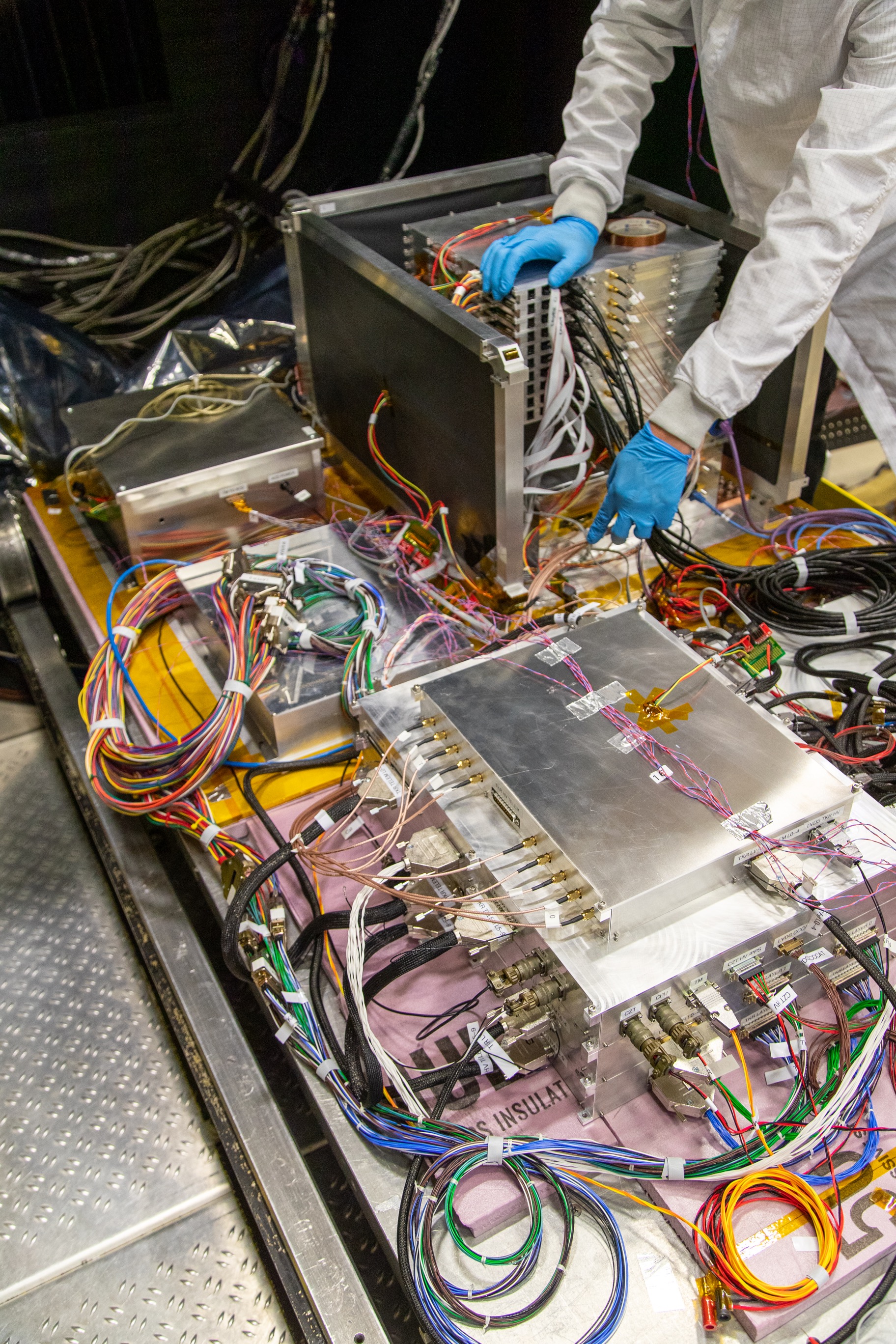NASA to hunt deep space gamma-rays with new high-altitude balloon mission
Next month, the agency plans to begin detecting invisible signals from some of our universe's most extreme regions.

In August, NASA plans to deploy a high-altitude balloon that'll hunt for gamma-rays, or high-energy wavelengths produced by some of the most powerful explosions in our universe. And last week, the agency provided an update on the mission.
The novel instrument, known as ComPair, has officially been shipped off to its launch site in New Mexico as preparation for next month's liftoff.
If all goes well on the big day, ComPair will sit at a height of about 133,000 feet (40,000 m) above ground, which NASA likens to nearly four times the cruising altitude of a commercial airliner. Once locked-in-place, it'll hopefully test key technologies designed to catch signals of information-rich gamma-rays traveling across space.
Simply put, gamma-rays are invisible waveforms generated by some of the most extreme cosmic entities and interstellar scenarios you can imagine. They often stem from neutron stars, for instance, stellar bodies so dense a tablespoon of one equals something like the weight of Mount Everest. They can also be found in regions of space that house black holes, pulsars and even supernovas. Finding these rays can thus help scientists chronicle the exotic, intense objects that spit them out.
Related: Here's what the sky would look like if humans could see gamma rays (video)
Ultimately, figuring out what space is like near these enigmas can lead to new types of physics, given that gamma-rays are found in arenas that can serve as sort of spaceborne laboratories. For example, many experts enjoy testing whether the theory of general relativity, which has a lot to do with gravitational pull, still stands strong near things like neutron stars that have unimaginably strong gravitational fields compared to the objects in our solar system.
In a way, by looking to the stars, humans can perform experiments impossible to conjure on our own planet.
Breaking space news, the latest updates on rocket launches, skywatching events and more!
It's true that gamma rays can be found on Earth, such as in lightning, but with ComPair, NASA wishes to detect these waves with specific energies between 200,000 and 20 million electron volts. That level of gamma ray power, the agency says, is typically associated with things like cosmic explosions, supermassive black holes and what're known as gamma-ray bursts. Gamma-ray bursts, in essence, refer to what many experts consider the strongest and brightest explosions in our universe, thought to be produced during the formation of black holes themselves.
"The gamma-ray energy range we’re targeting with ComPair isn’t well-covered by current observatories," Carolyn Kierans, the instrument’s principal investigator at Goddard, said in a statement. "We hope that after a successful balloon test flight, future versions of the technologies will be used in space-based missions."
One such observatory Kierans is referring to is NASA's Fermi Gamma-ray Space Telescope. Though in contrast to ComPair, Fermi observes light in the energy range between 8,000 and over 300 billion electron volts – a much wider field than the agency's upcoming gamma-ray tracker.
According to the recent press release, however, Fermi is actually how the team decoded the best range to program for ComPair's gamma-ray hunt in the first place.

The mechanism of ComPair lies in its name.
"Com" is short for Compton scattering and "Pair" is short for pair production. Both Compton scattering and pair production are basically ways of identifying and measuring gamma-rays.
In a nutshell, Compton scattering refers to how when a high-energy light particle called a photon hits another particle, such as an electron, the photon transfers some energy to whatever other particle it collides with. As gamma-rays are a form of light – they're just invisible to the human eye – this is something that's expected to happen sometimes as the rays travel through the fabric of space.
Pair production, on the other hand, refers to the event of a gamma-ray grazing the nucleus of an atom, which thereby turns the gamma-ray itself into a particle pair. One part of the resulting pair would be an electron and the other would be a positron, which you can think of as an antimatter electron. It's just that, unlike an electron, a positron has a positive charge.
For this reason, positrons are also sometimes called anti-electrons – and yes, there are also anti-protons.
Returning to ComPair, there are four components on the device that're expected to work together in detecting incoming gamma-rays. They'll essentially decode whether one of those two mentioned processes have occurred, and also measure various aspects of the signal itself.
To begin, NASA explains, ComPair is fitted with an instrument featuring 10 layers of silicon detectors which can determine the general positioning of an incoming gamma-ray. Then, there's also a high-resolution calorimeter that can measure gamma-rays which have undergone Compton scattering and another calorimeter that can measure those associated with pair production.
Lastly, there's something called an anticoincidence detector. Basically, the anticoincidence detector can differentiate between whether an incoming signal is of a gamma-ray or another sort of high-energy particle beam known as a cosmic ray. In the case of the latter, the detector can tell the other instruments on ComPair to ignore the signal. Otherwise, there'd be noise in the data and probably some confusion on what we're looking at.
But for now, the next step in ComPair's journey is simply to fly up toward the void. Until August, ComPair.

Monisha Ravisetti is Space.com's Astronomy Editor. She covers black holes, star explosions, gravitational waves, exoplanet discoveries and other enigmas hidden across the fabric of space and time. Previously, she was a science writer at CNET, and before that, reported for The Academic Times. Prior to becoming a writer, she was an immunology researcher at Weill Cornell Medical Center in New York. She graduated from New York University in 2018 with a B.A. in philosophy, physics and chemistry. She spends too much time playing online chess. Her favorite planet is Earth.
